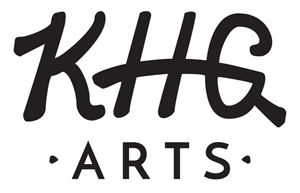 Students at JP Knit & Stitch in Boston showing off their HL ABC samplers in progress
Students at JP Knit & Stitch in Boston showing off their HL ABC samplers in progress
This is the first in a two part “Tips & Tricks for the HL ABC Sampler” series. Click here for the second post.
I originally designed this sampler as an instructive tool that I could use in my teaching practice. There are lots of great patterns out there that can be used to teach the basics, but not much in the way of contemporary designs that show off the hundreds of advanced stitches out there. As a result, they’re fading from our popular lexicon. As a textile historian, It means a lot to me to be able to create and contribute something that helps keep these stitches alive and well!
It’s always a treat to see the different ways that everyone stitches the sampler up, both in class and from afar. Today I’m going to share with you a few tip & tricks to make it easier for you to stitch up your own version at home.

All About that Floss
There are 26 letters in the alphabet, so at the very least, you will need that many skeins of floss if you choose to assign each individual letter it’s own color. For many of the letters, I have used more than one color; for me this came out to 37 colors in total. I used 6 ply cotton floss, but you could also try stitching this up in wool, silk, mercerized cotton, or linen, to name just a few. The choice is up to you! If you’d like to use the same colors I did in the sample, you can refer to the Color Guide on my Resources page (a free download!).
Fabric Types
If you are transferring this pattern from the PDF rather than working with the pre-printed copy, you’ll want to read this! Linen is the commonly preferred type of fabric to stitch on these days, but for this sampler, I recommend using a lightweight canvas (a cotton or a linen/cotton blend will do). Why is that? Well, when many of the stitches you see in the sampler were most popular, the commonly preferred type of fabric for stitching on was called fustian or ditty cloth. These substrates have since gone out of fashion, but modern day canvas with a twill weave is quite comparable. PLUS it supports the heavy fill work of these stitches really beautifully. Try it, it’s great to stitch on! Plain weave canvas and linen will also work, so I encourage you to experiment and see what you prefer.
Where Do I Start?
This sampler starts with basic outline stitches and builds upon them to help expand your stitch vocabulary with intermediate to advanced outline, laid, knot, detached, and fill stitches. If you’re feeling unsure about where to start, I recommend stitching the letters in the following order so that each one serves as a foundation for the next:
U, N, R, H, Z, I, Y, M, C, G, Q, A, F, B, S, O, P, E, J, K, T, D, X, W, V, L
Navigation
It’s usually best to start from one corner or end of a letter, working towards the opposite side. Whether that is top-to-bottom, side-to-side, or vice/versa, matters less. It may be different for each person, but try to think of it in terms of driving a car—what is the most logical and/or efficient route from point A to B without backtracking or running out of gas (or in this case, floss)?
For the letters K and D, I recommend stitching the outlines first to give your work a more defined edge. From there you can fill in to achieve your desired density.
If you are practicing these stitches for the first time, go easy on yourself and take pride in the process of learning and making without too much focus on this aspect. We can always work to improve navigation efficiency and the cleanliness of the reverse side of our projects, but we may not get to those projects if we embrace the onerous burden of perfection as beginners. Everyone was a beginner once!
Care
How can you care for your sampler once it’s done? If you want to wash it before framing, I recommend hand washing with gentle detergent. Just be sure to note—red, purple, and blue colored flosses can be less colorfast than others, so testing those skeins first can save you headaches down the line. Never put hand embroidered pieces in the dryer; always let them air dry! Once dry, place your piece wrong side up over a towel on an ironing board. The towel will act as a cushion for the stitches as you iron, working out wrinkles without crushing all your beautiful work. To keep it in good condition, go over it with a low-suction vacuuming every so often. This is a much gentler way to care for textiles that you want to last for a long time, rather than constant laundering.
Leave me a note in the comments section if there are any other questions you have or things you’d like to know more about. I’ll respond there and, if there are any frequently asked questions, I’ll be sure to update this post for everyone.

Leave a Reply